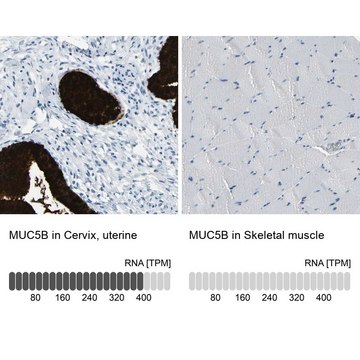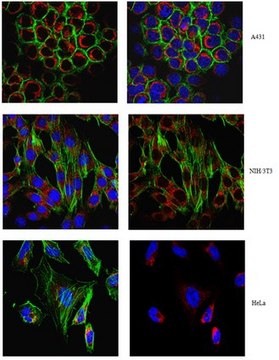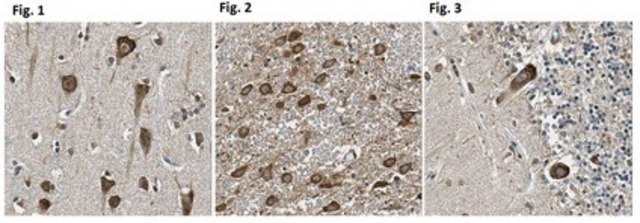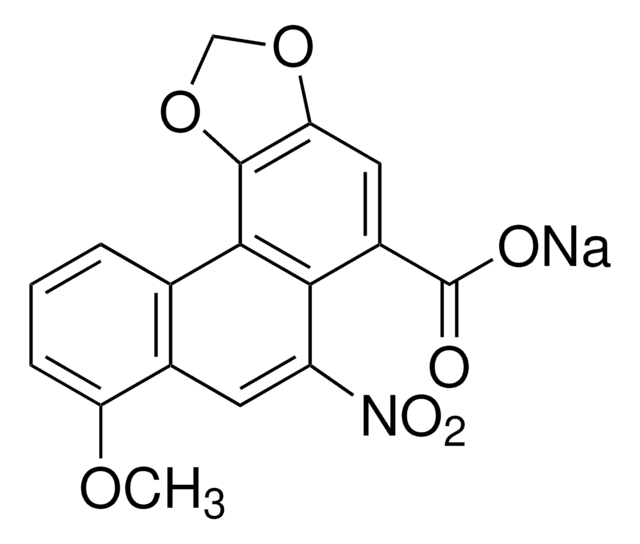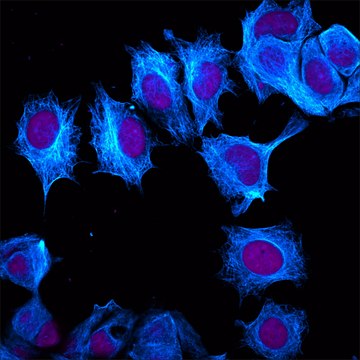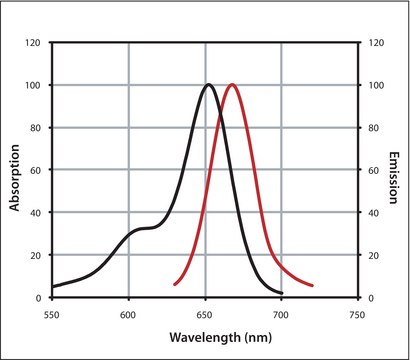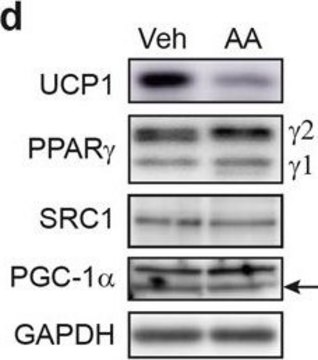SAB4200856
Anti-Mitofilin antibody, Mouse monoclonal
clone BNP-28, purified from hybridoma cell culture
Recommended Products
antibody form
purified from hybridoma cell culture
Quality Level
clone
BNP-28, monoclonal
form
liquid
species reactivity
rat, mouse, bovine, human
concentration
~1 mg/mL
technique(s)
immunoblotting: 2-4 μg/mL using whole extracts of human liver cancer cell line HePG2
immunofluorescence: 5-10 μg/mL using human liver cancer cell line HePG2
isotype
IgG2a
UniProt accession no.
shipped in
dry ice
storage temp.
−20°C
target post-translational modification
unmodified
General description
Their dysfunction leads to various human diseases. Mitochondria membrane is composed of the outer membrane (OMM) and the inner membrane (IMM) where the electron transport chain machinery takes place and the cristae folds of the mitochondria are formed.1 Mitofilin, a transmembrane IMM protein, is a critical core component of the mitochondrial contact site and cristae organizing system (MICOS).Mitofilin is expressed preferentially in the heart3 but also in the brain4, liver5, kidneys6 and eyes7. It is abundantly found at mitochondrial cristae junctions and is also present within cristae.8,9
Specificity
Application
Biochem/physiol Actions
Mitofilin downregulation or misexpression has been associated with various human diseases such as, diabetes, Parkinson′s and Alzheimer′s diseases, heart failure, hepatic carcinoma, gastric cancer and Glaucoma.1
Physical form
Storage and Stability
Disclaimer
WGK
WGK 1
Flash Point(F)
Not applicable
Flash Point(C)
Not applicable
Regulatory Information
Certificates of Analysis (COA)
Search for Certificates of Analysis (COA) by entering the products Lot/Batch Number. Lot and Batch Numbers can be found on a product’s label following the words ‘Lot’ or ‘Batch’.
Already Own This Product?
Find documentation for the products that you have recently purchased in the Document Library.
Our team of scientists has experience in all areas of research including Life Science, Material Science, Chemical Synthesis, Chromatography, Analytical and many others.
Contact Technical Service
